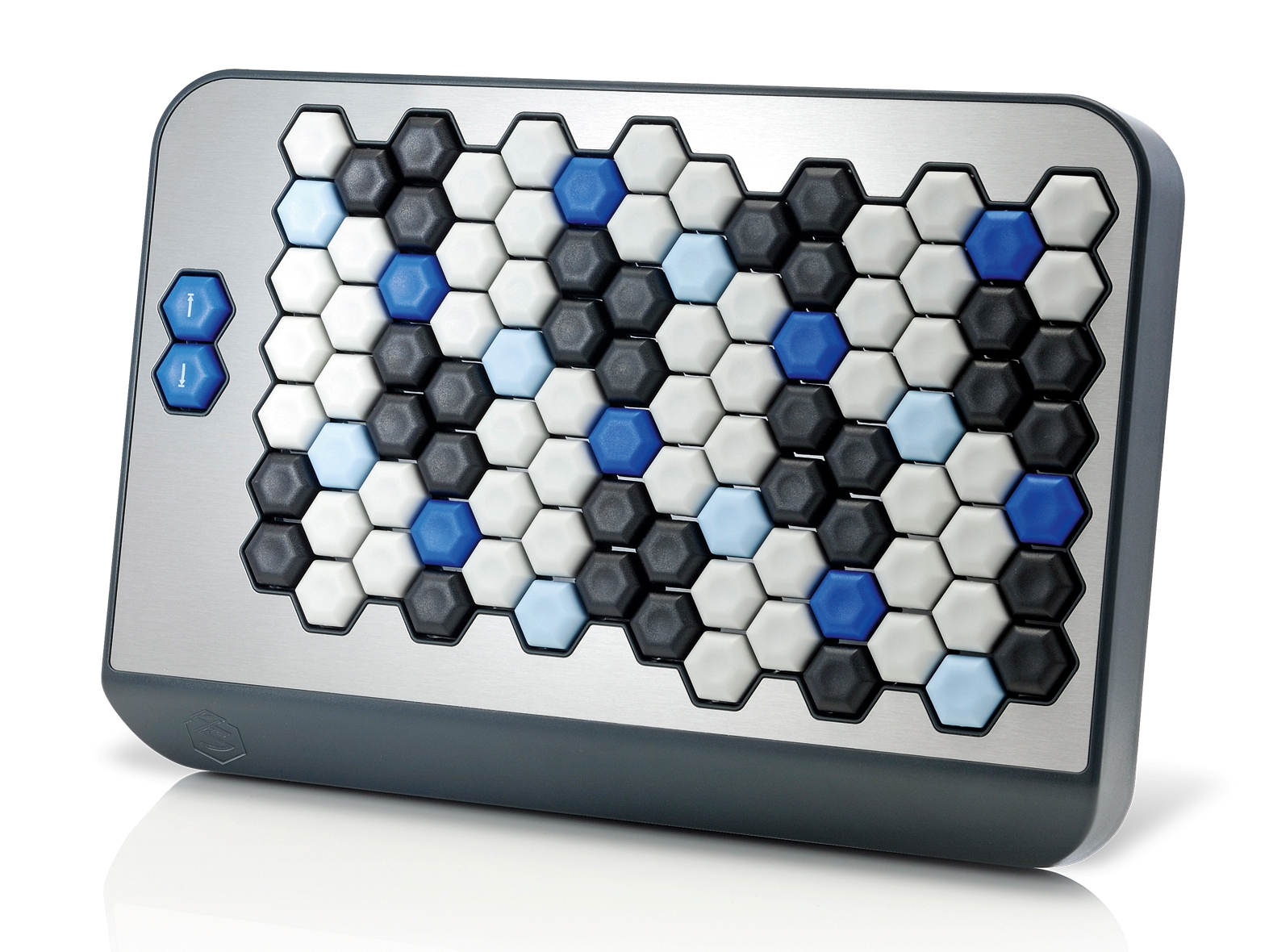MusicRadar Verdict
AXiS has scored with this fun, logical and computer musician-friendly alternative to the piano keyboard.
Pros
- +
Good key action. Solid construction. Minimal learning curve. Reasonably priced. Chords/scales are the same in every key. Plug and play…
Cons
- -
… If you've got Vista SP1! Can't change velocity response curve. A slimline model would be neat.
MusicRadar's got your back
There are countless MIDI control surfaces out there, but when it comes to actually playing a tune, the piano-style MIDI keyboard remains ubiquitous. However, if you can't get the hang of the 'ivories', there are alternatives, such as C-Thru Music's line of AXiS controllers.
The first in this range was the AXiS-64, but here we're looking at the new AXiS-49 controller, which is far simpler. It's got 98 keys, octave up/down buttons, a USB port and that's it.
The case is made of plastic with an aluminium fascia and feels rugged enough. It has a compact footprint (29cm x 20cm), though at 4.5cm deep, it's not as slim as we'd hoped.
It's a bus-powered unit and should be seen immediately by your OS as a standard MIDI device. However, one of our Vista test systems would not install the AXiS-49 until we installed Vista Service Pack 1 (we heard of at least one other AXiS-49 user with the same issue).
In detail
What both AXiS models have in common is an array of hexagonal velocity-sensitive keys that send out a MIDI note when pressed/struck (the AXiS-49 transmits only on MIDI channel 1). They're coloured black and white according to the C major scale (like a piano) and D and G# are highlighted in blue. You also get a sheet of stickers with note names to slap on the keys.
"It didn't take us long to get used to the Harmonic Table - after an hour or so, we had the basic chords and scales sussed."
The notes are laid out in a scheme called the Harmonic Table, which ensures a consistent intervallic relationship between cells. For instance, every key has its perfect fifth directly above it.
Want all the hottest music and gear news, reviews, deals, features and more, direct to your inbox? Sign up here.
Going up and to the left shifts the interval to a minor third, while up and right gives a major third. This means that chord and scale shapes are the same in every musical key, unlike on a piano.
It didn't take us long to get used to the Harmonic Table - after an hour or so, we had the basic chords and scales sussed. One very cool thing about this layout is that the keys making up a basic major or minor triad are adjacent, forming a triangle (playable with a single finger by pressing at the intersection of the keys, although if your fingers are skinny, you might prefer to use three fingers, for greater consistency).
Playing a seventh chord is as simple as adding a cell to the top of the cluster, and C-Thru offers a PDF showing you how to play common chords.
As for scales, once you've got, say, the major scale pattern down, you can start on different degrees of the scale to achieve minor and other modes. And diminished and whole tone scales are especially simple. One thing to note is that although there are 98 keys, there are only 49 notes - each note is available on two different keys.
Summary
Playing the AXiS-49 is not unlike typing on a quality laptop QWERTY keyboard (our only real criticism is that you can't change the velocity response curve). It's easy to slide fingers across the keys and even cover the full four-octave range with one hand!
The fact that each note is in two places can be exploited, eg, to harmonise runs using both hands, or using alternating hits for fast/tricky patterns. Of course, it takes years of playing any instrument to become truly proficient - we wonder what some technically adept musicians will accomplish with an AXiS.
To sum up, it's hard to knock the fun and addictive AXiS-49 - it feels good, the price is right and the musically logical Harmonic Table can help bust those mental blocks.
Computer Music magazine is the world’s best selling publication dedicated solely to making great music with your Mac or PC computer. Each issue it brings its lucky readers the best in cutting-edge tutorials, need-to-know, expert software reviews and even all the tools you actually need to make great music today, courtesy of our legendary CM Plugin Suite.

